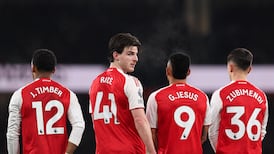A typical scene at the Brewster gym. Joe Louis strolling in with a violin case in his hand, still pretending to his mother he's on his way to music lessons instead of heading towards a place in boxing history. Walker Smith Jr just hanging around, a star-struck kid constantly wanting to touch the hem of the future champ's garment, he will one day become Sugar Ray Robinson. Eddie Futch in the ring, leading the sparring, accumulating knowledge later put to good use as trainer to Joe Frazier and other marquee names that define different eras in boxing.
Louis, the Brown Bomber. Robinson, the boxer generally acknowledged as the best pound-for-pound fighter of all time. Futch, the man who famously stopped the Thrilla in Manila at the end of the 14th by telling Frazier, “Sit down, son, no one will ever forget what you did here today”.
Just three excerpts from the book of Brewster, enough perhaps to demonstrate why the story of boxing in the 20th century is so bound up in the story of a red-brick building in a corner of Detroit where America’s first government-funded housing project for black people was built.
When it opened its doors in 1929, Brewster Recreational Centre had art deco architectural flourishes but it soon became something of a factory, a production line of world-class boxers and trainers that spawned its own fighting style.
Now, like boxing, the sport that once obsessed America, like Detroit, the town that once manufactured the country’s cars, Brewster-Wheeler (the second name was added later to honour the city’s first black recreation worker) is on the ropes.
Vacant more than a decade, the wrecking ball looms, and another piece of African-American sporting heritage looks set to be lost forever.
“Today, there are no windows and it is home to rats, homeless people and pigeons,” says Dr Stuart Kirschenbaum, formerly the Michigan State Boxing Commissioner.
“There is no chance it will be saved. For again, it is in a part of Detroit that has no hope, no business and no way for a young boy to travel with dreams of becoming a champion. There is little sense of history in Detroit, no less preserving it.
Mean streets
“Memories are all we can hold on to and pass down to the next generation, yet kids grow up on the mean streets here and know little of Louis, Robinson, and Al Blue Lewis.”
Very few people epitomised the gym like Al Blue Lewis. One January day in 1966, he caught a bus from Jackson State Prison back to his native Detroit, and headed for Brewster. After serving five years, six months and two weeks for manslaughter, Lewis had been paroled early for stopping an inmates’ riot. He did enough hard time to know his best chance of never going back behind bars lay inside the ropes of a ring he first climbed through as a little kid.
Once he convinced everybody at Brewster he hadn't escaped from jail, Lewis started training and began a journey that brought him all the way to Croke Park on a balmy summer's night in 1972 to fight Muhammad Ali.
He never fell foul of the law again. Eventually, he became a trainer at Brewster, appreciating the opportunity to teach the discipline and structure the sport gave him to generations of kids in an area where gangs lured so many prospects astray.
The time Mike Tyson dropped in to work out and pay homage, Lewis was running the gym. Tyson knew his boxing history and Brewster's place in it. He'd always wanted to break sweat where Joe Louis used to pound the bag so hard it would be too dented for the other fighters to use.
“I can’t believe he’s been here,” said Tyson that day. “It’s like fiction. I am just happy to be here.”
Around the Brewster Projects, it was often said boxing, basketball and music were the only way out. Like Emanuel Steward, Berry Gordy was an Eddie Futch protege before going off to start Motown Records.
Pick-up games
The Harlem Globetrotters regularly visited to recruit players from the pick-up games that took place on the Brewster court. This is sports venue as socio-cultural institution, and even in a bankrupt city where thousands of vacant homes and too many landmark buildings, including the fabled Kronk gym, have fallen to wrack and ruin, levelling Brewster will leave a gaping hole in the historical narrative.
For decades, a painting of Louis hung in the lobby of Brewster, like some quasi-religious relic. It was a point of local pride that, even in the worst of times, nobody dared touch that picture. A few years back, Kirschenbaum went looking to salvage it, hoping to put it on public display.
“It had disappeared,” says Kirschenbaum. “In Detroit, if it’s not nailed down, it won’t be there in the morning. If it is nailed down they will take the wall it’s hung on.”
In that unforgiving environment, even building any sort of monument to commemorate all that fistic folklore, all those folk heroes, is regarded by many as futile. So, very soon, the wrecking ball will reduce the red brick walls to heaps of rubble. After that gets trucked away, grass will grow in the space left behind. And over time, the greatness of what was once Brewster will become just another verse in the sad ballad of old Detroit.











